We recently noted that the pandemic and its impact on higher education has so far had little effect on the league table compilers and we are still getting rankings emerging. The latest one of these is the outstanding Wonkhe Car Parking Ranking of course so who are we to talk.
The data for the essential car parking ranking is taken from the latest HESA Estates Management Statistics which includes the area of universities’ buildings and grounds, renewable energy generation, water consumption, emissions, waste, recycling, transport, and environmental management. Lovely.
Most of these items do not change very much over the years so let’s have a look at these more stable tables.
A Good Grounding
First up is total grounds area. This is a bit different from the total land ownership ranking we saw here a while back and simply reflects the total land area of a university in hectares. Big campus universities, unsurprisingly, do rather well here:
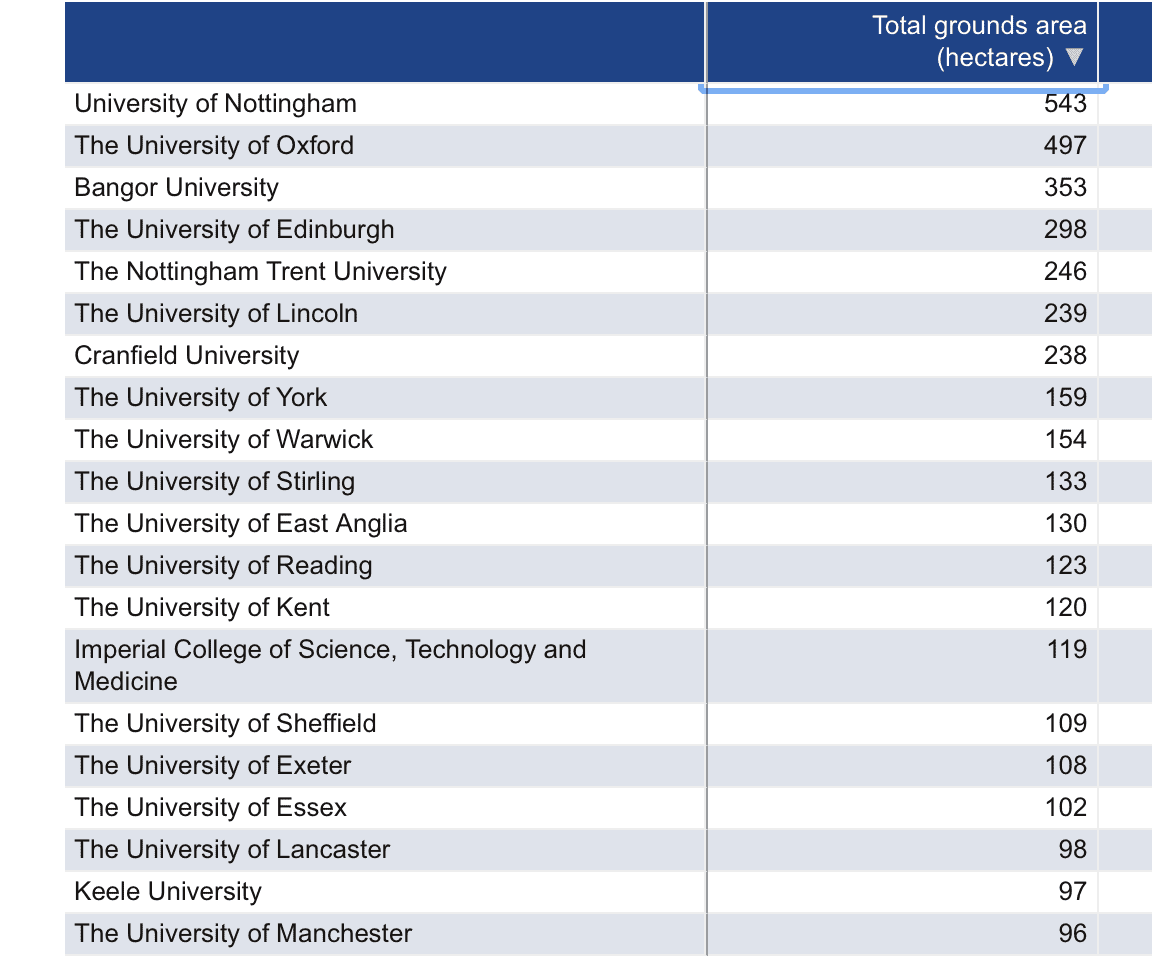
Build it and they will come
Then we have total number of buildings. This is simply a count of residential and non residential buildings a university has recorded. They must spend a lot of time counting things in Aberystwyth.
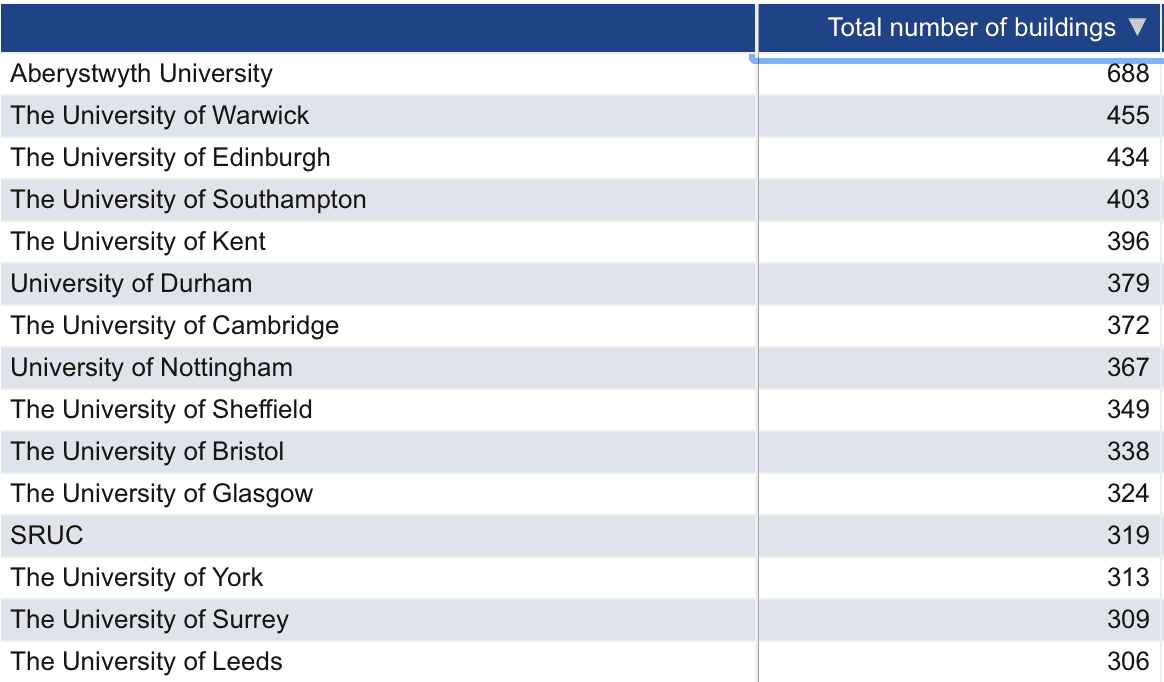
Hoop dreams

Environmental concerns demand that we all need to move on beyond car parking requirements and here we have the provision of cycle hoops. One university is, perhaps unsurprisingly, a long way ahead of the cycling pack:
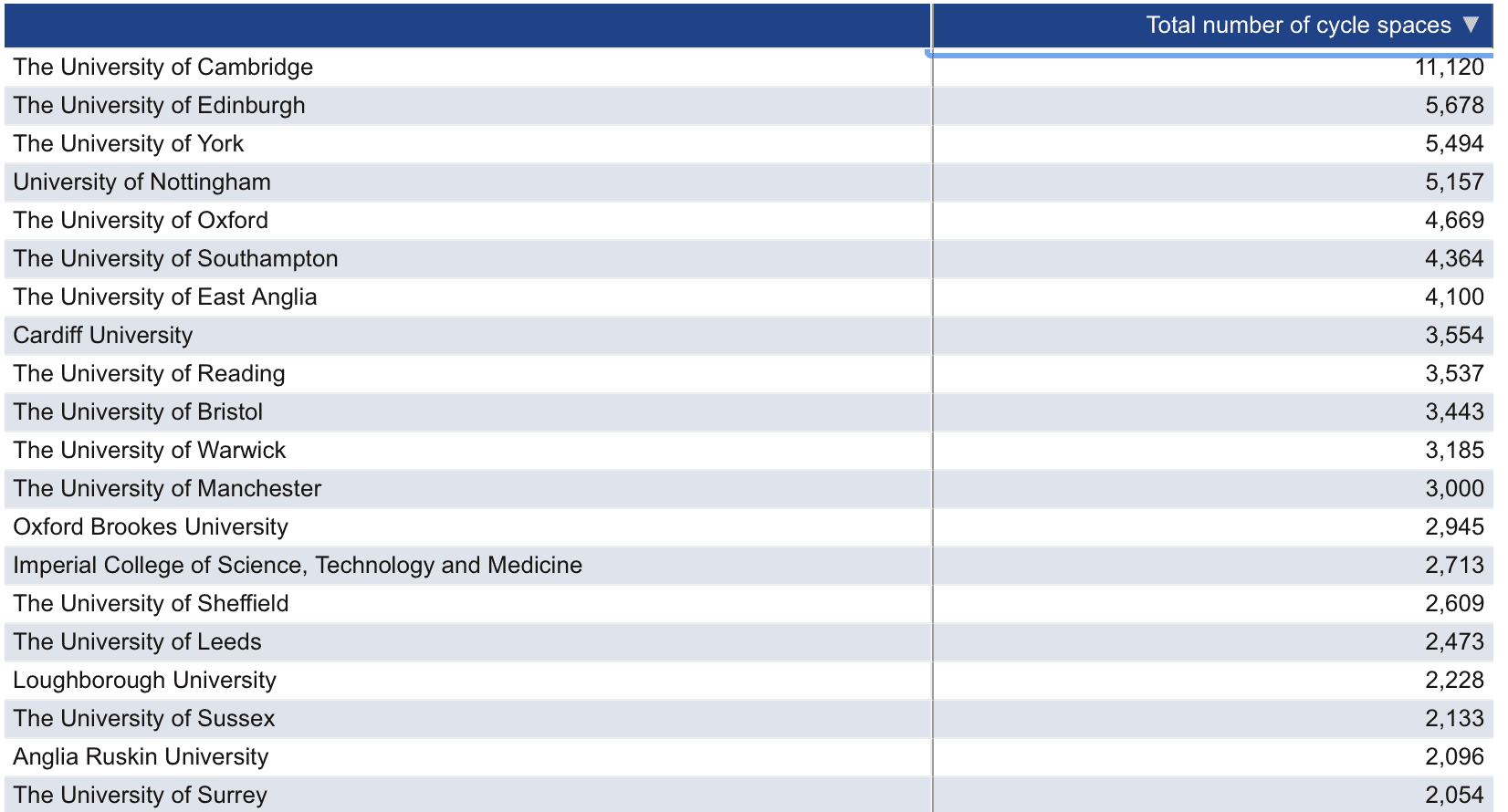
Fuel for thought
Fuel consumption is another key indicator of environmental responsibility and the table here combines a number of different indicators to add up to a total of litres of fuel used in university vehicles each year. Cranfield, despite being the biggest and indeed only user of aviation fuel, doesn’t quite make it to the top of the list. That spot is reserved for Hertfordshire which for a number of years seems to have consumed vastly more diesel than any other university, nearly 10 times more than the nearest institution for the fourth year running. I wonder where it is all going. (Editor’s note: the University of Hertfordshire has clarified that it own a regional bus company, UnoBus, whose diesel consumption is included in the university’s estates data return).
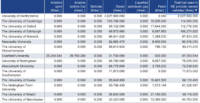
The winds of change
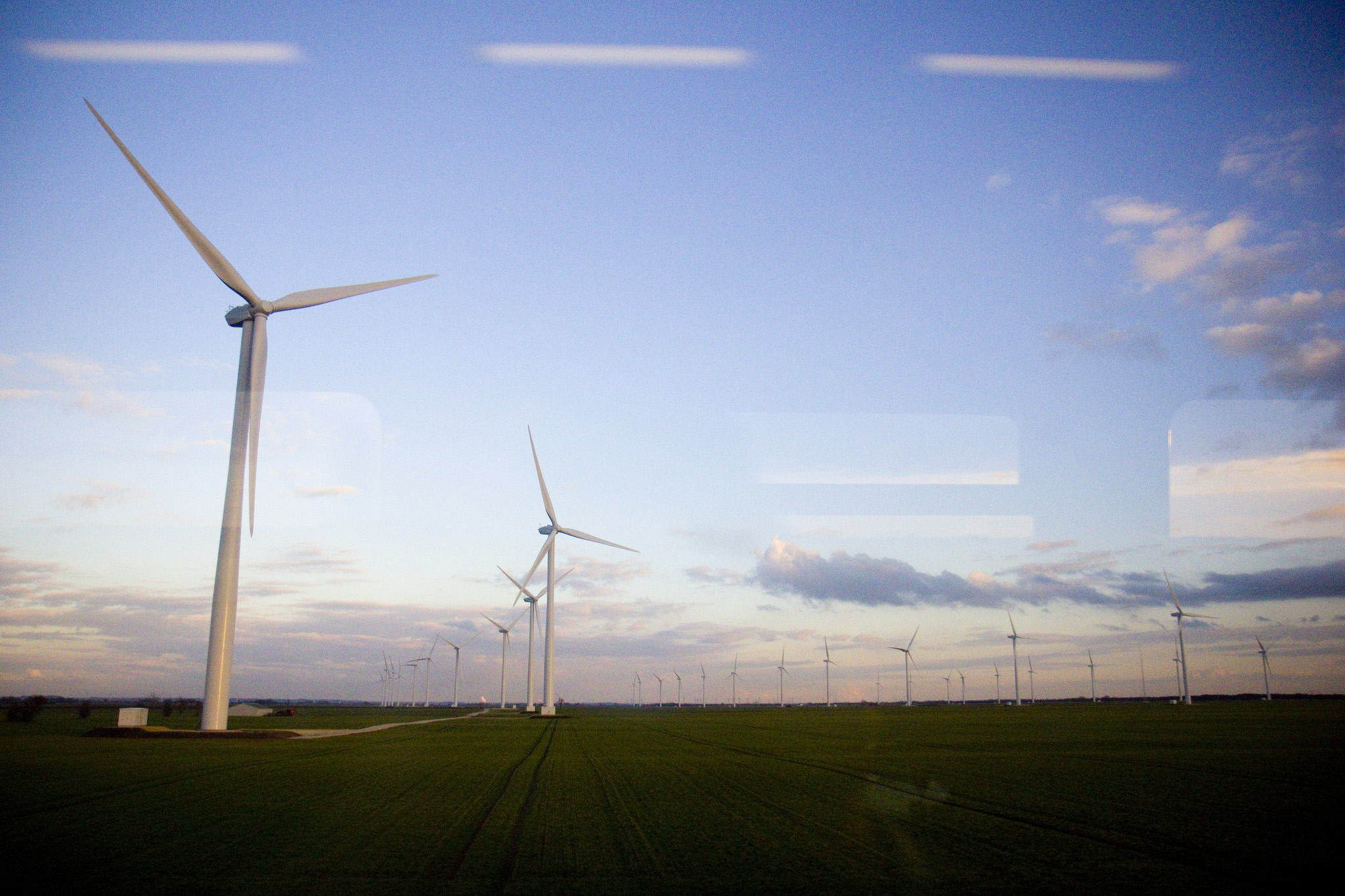
And then finally we have the energy produced by universities themselves – this table shows the total renewable energy generated by institutions in KwH. It’s a pretty similar table to last year with Queen Margaret and Lancaster swapping places and a few other changes in the minor places.

The latest data might well be the last comprehensive collection of this kind as there is some doubt as to whether all universities will continue to submit data to what is likely to be at least a partly optional return for institutions. A small saving in regulation perhaps but such a change potentially means the end of a rich source of ranking data. The horror.













I believe the University of Hertfordshire owns and runs a bus company, hence the need for diesel
Hertfordshire’s fairly extensive bus network might account for the diesel consumption.
I’m a big fan of the EMR data. The data on numbers of staff and students attacked by animals is especially fascinating.